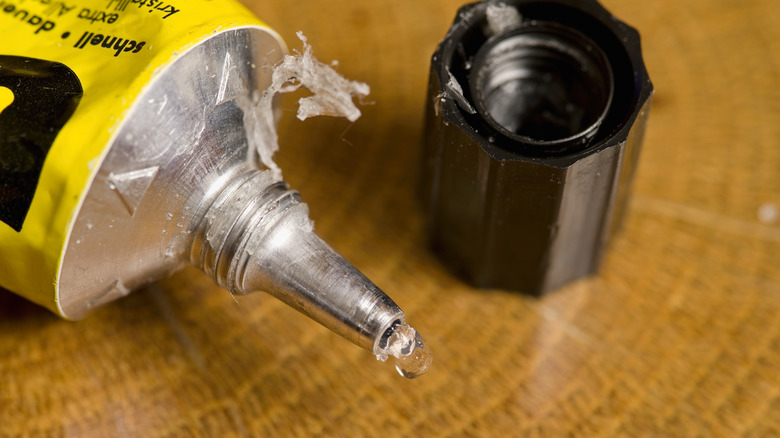The Glue Trick That Joins Two Pieces Of Wood Without Clamps In An Instant
Long before we are able to lift hammers or use nail guns, we form a special bond (pun intended) with glue. There are more than a dozen types of glue that you should have on hand at all times. From making paper collages and science projects with the kids to DIY home repairs, the sticky adhesive in its many forms has become a necessity. Some glues, like wood glue for example, require sustained pressure while drying and can take a while to fully set, but there is a handy trick used by woodworkers and model makers to speed up the process. When used with an activator, CA glue sets almost instantaneously, which means less time waiting and more time making.
CA is an abbreviation for Cyanoacrylate, but the substance is best known as super glue or crazy glue. CA glues come in thin, medium, and thick viscosities and are generally meant for holding small pieces together. For larger pieces or anything that will bear weight or have its joints stressed, it works best as a opening act before the main event of screws, nails, or some other permanent fastener.
The science of CA glue and CA glue activators
The "trick" for instantly joining wood without clamps is actually a science. According to adhesive experts, CA glues include a stabilizing agent that keeps them in liquid form inside their tubes. Moisture deactivates the stabilizer, causing the glue to polymerize and bond to most surfaces. CA activators, also called accelerators, are often acetone based. The acetone speeds up the already speedy process by quickly evaporating the moisture.
In a video about why CA glue and activators are two of his favorite things, industrial designer and "maker" Adam Savage shared another type of accelerator that he has used for decades and that you may already have in your home for its many uses in cleaning hacks: sodium bicarbonate, or baking soda. In addition to being cheap and readily available, Savage says that a bonus of using baking soda is that it "doesn't yield any smells or acids or anything that makes your eyes water." Aerosolized accelerators often have straw tips and are easier to direct and control than a sprinkle, so having both on hand just in case is good idea.
